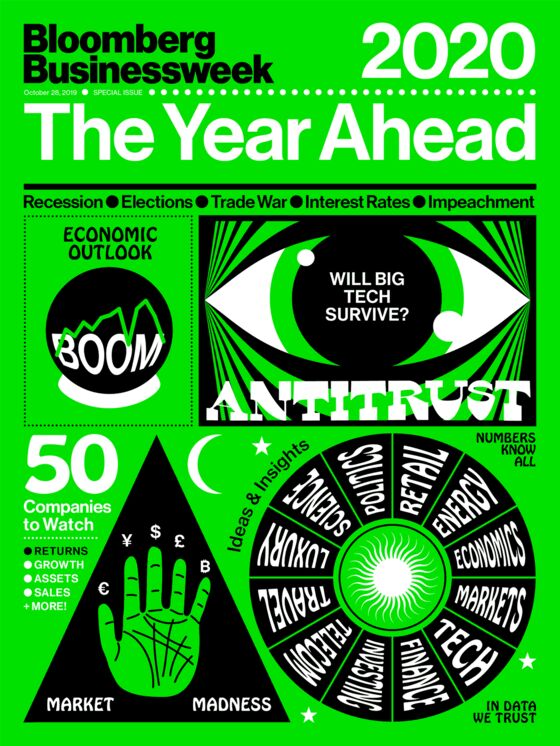The Battle of the Streaming Services Is the Show That Will Never End
The Battle of the Streaming Services Is the Show That Will Never End
(Bloomberg Businessweek) -- On Aug. 4, 2015, Walt Disney Co. Chief Executive Officer Bob Iger sent a tremor through the halls of media companies around the world when he acknowledged his cable network ESPN was losing subscribers. Cord cutting, once dismissed as a fantasy, was a reality. Disney shares plummeted, as did those of media companies across the U.S.
Most analysts agreed on the culprit: Netflix, the world’s largest paid streaming service. It had offered customers a cheaper, advertising-free alternative to cable that also let them watch what they wanted when they wanted. And every customer who canceled cable service had a particularly strong impact on ESPN, the most expensive cable network in the U.S.
For years, Iger and his peers had licensed their most popular TV shows and movies to Netflix Inc., essentially digging their own graves for short-term profit. But Iger was still in denial, defending the move as a shrewd economic decision. “Netflix has become a really important partner to us in buying our off-network product,” Iger said then. “We look at Netflix actually right now as more friend than foe because they’ve become an aggressive customer of ours.”

What a difference four years makes. In November, Iger will unveil Disney+, a paid streaming service he’s dubbed the most important new product of his 14-year tenure. While he claims he’s not competing with Netflix, his actions suggest otherwise. Disney has pulled its movies from Netflix, barred its TV studio from selling it any new shows, and prohibited advertising for the service’s original programming on Disney TV networks.
After years of downplaying Netflix’s negative effect on the cable business, media companies are going all-in on internet TV, spending billions of dollars to finance new apps and new shows. Disney+ is one of four services set to start in the coming 12 months, alongside Apple TV+, Comcast’s Peacock, and AT&T’s HBO Max.
“The Streaming Wars,” as many have called this video arms race, are the talk of Hollywood and Wall Street. “The launch of these new services will be noisy,” Netflix said in a letter to shareholders in mid-October, acknowledging that the new competition would cause its business “short-term headwinds.”
Netflix CEO Reed Hastings believes there’s room for everyone as more viewers ditch cable for online TV, a trend he foresaw two decades ago. Netflix, Amazon.com, and Hulu have all grown in recent years, as have HBO and Showtime. “All of us are competing with linear TV,” he said on a recent call with analysts. “We’re all relatively small to linear TV.”

But there likely is a finite pie. People spend about $100 a month on TV, a number that’s remained fairly consistent, when adjusted for inflation. And for all the talk about cord cutting, more than 80 million people still pay for cable or satellite TV in the U.S. That number will shrink, but it won’t disappear as long as the rights for live sports are locked up by over-the-air broadcasters and cable networks.
Most surveys suggest the average customer will pay for three to five streaming services. Netflix, Amazon, and Hulu are all well-entrenched and unlikely to hemorrhage customers. That leaves room for one or two more winners—and a lot of also-rans.

Disney+ is the favorite among analysts and executives. At $6.99 a month, it costs about half as much as Netflix and offers a library of movies and TV shows that appeals to every kid—everything from The Avengers and Star Wars to The Simpsons and Toy Story. Name a parent who isn’t going to buy the service just to stop renting Frozen over and over.
The prospects for everyone else are less clear. Apple has the advantage of giving away its service for free to people who buy its devices—more than 200 million sold each year. But it has no library to speak of and little experience producing shows.
HBO Max will offer the widest array of programming, including old favorites Game of Thrones, Friends, and the Harry Potter films, as well as a deep lineup of new original series. But HBO Max is expected to cost even more than Netflix, in part because it can’t undercut the price HBO charges through cable operators.
A version of Peacock that includes ads will be free to people who already get sister network NBC through a pay-TV provider, and it comes loaded with a deep library of Universal films and NBC shows as well. But few are convinced parent Comcast Corp., the nation’s largest cable provider, is quite ready to aggressively undermine one of its biggest businesses.
All this competition is going to be expensive—and the cost for making TV programming will rocket into the stratosphere. The average cost of the top shows has jumped 30% in just 12 months, according to Ted Sarandos, Netflix’s chief content officer. Netflix is spending $15 billion on programming this year, while Amazon, AT&T, Comcast, and Disney are boosting their output to comparable levels.
That’s bad news for the networks on traditional cable. Viewership has already been dropping by double digits annually. Now the biggest media companies are likely to save their best shows for streaming, leaving TV with the leftovers.
“The loser is cable,” says Rich Greenfield, an analyst with LightShed Partners. “The $90 bundle has content that gets worse and worse.”
To contact the editor responsible for this story: James Ellis at jellis27@bloomberg.net
©2019 Bloomberg L.P.